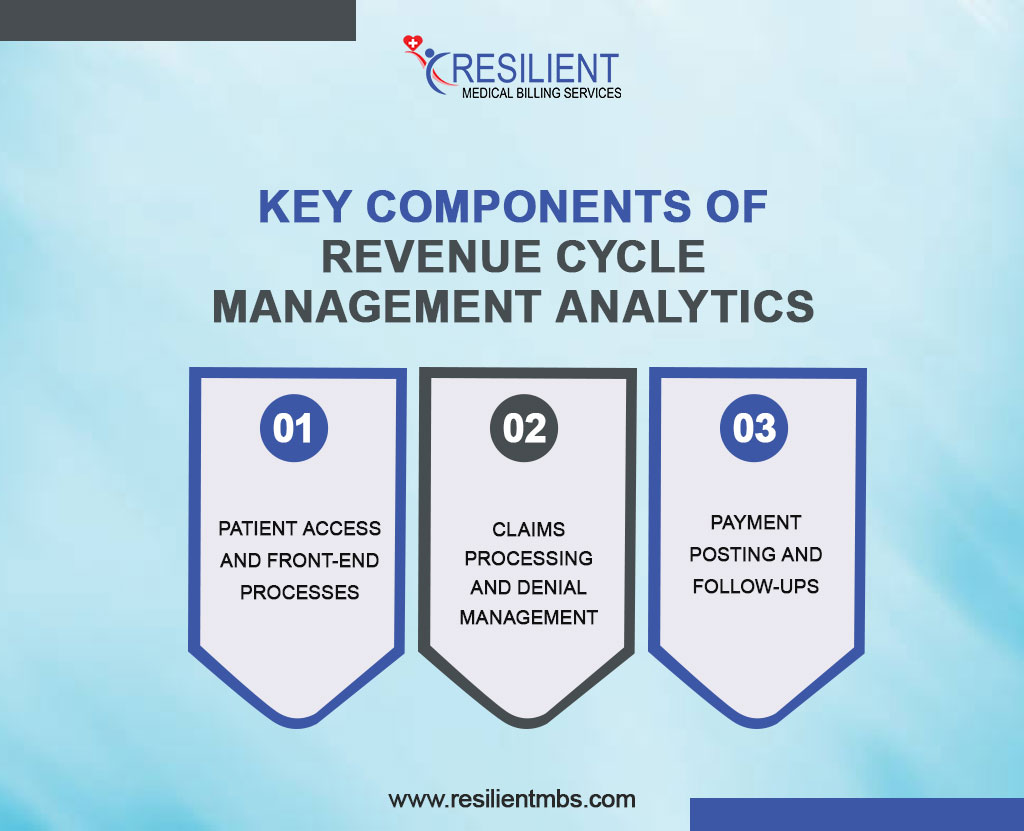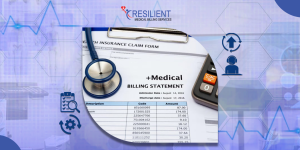Today’s medical practices are under more pressure than ever. Some of the reasons are rising costs, shifting regulations, and complicated payer rules that make financial management a real challenge. That’s where Revenue Cycle Analytics comes in.
Instead of relying on outdated reports or gut instinct, this data-driven approach gives healthcare providers real-time insights to spot inefficiencies, reduce revenue loss, and boost financial performance. Whether you’re running a private clinic or a large hospital, smarter billing starts with smarter data.
This blog will talk about how Revenue Cycle Analytics might help a medical practice’s finances. We’ll talk about what it is, why it’s important, and how healthcare providers can use it to find waste, stop income loss, and improve their overall financial performance.
You will learn how to make billing easier and bring in additional revenue in a huge or tiny healthcare company.
What is Revenue Cycle Analytics?
Revenue Cycle Analytics refers to the systematic collection, analysis, and interpretation of financial and operational data related to the revenue cycle in healthcare. The revenue cycle encompasses every step from patient registration and insurance verification to billing, claims submission, reimbursement, and collections.
Knowing what revenue cycle analytics refers to helps one to see the whole financial situation of a practice, not only as reporting. These analytics highlight hidden inefficiencies, claim processing delays, and trends suggesting underpayments or coding problems.
In Revenue Cycle Analytics, some of the most essential metrics that are tracked are:
- Days in Accounts Receivable (AR)
- Claim denial rates
- Clean claim rate
- Net collection rate
- Patient payment trends
- Cost-to-collect ratio
What is the Revenue Cycle Process?
The revenue cycle managment involves a series of steps to record the income a business generates. It tracks activities like sales, returns, and payments.
Assessing the revenue cycle helps improve financial stability, increase profits, and boost customer satisfaction by streamlining business processes.
The process starts when a customer places an order and ends when payment is received. It repeats for each order.
Key steps include:
- Receiving orders
- Processing orders
- Generating invoices
- Delivering goods/services
- Recording transactions
- Collecting payments
The Importance of Healthcare Revenue Cycle Analytics
Revenue cycle analytics is important for healthcare organizations to stay financially stable and run efficiently these days. It gives information about the whole revenue cycle, which helps providers find trends, fix problems, and make things better in both clinical and administrative areas.
By looking at performance data, businesses can find flaws like waiting too long to register patients or making mistakes when coding, which lets them make specific changes to the way work gets done.
Revenue cycle analytics also helps with regulatory compliance and improves financial forecasting, which helps healthcare leaders plan for future challenges, predict revenue, and distribute resources.
Key Components of Revenue Cycle Management Analytics
Analyzing and strengthening the financial situation of a healthcare company depends mostly on Revenue cycle management (RCM) analytics. They offer observations in three primary areas:

- Patient Access and Front-End Processes
Analytics help track metrics like registration accuracy and insurance eligibility verification, reducing denials and improving patient satisfaction.
- Claims Processing and Denial Management
By analyzing claim acceptance rates and denial reasons, providers can identify and correct issues such as coding errors and documentation gaps to ensure timely reimbursements.
- Payment Posting and Follow-Ups
RCM analytics reveal payment trends and outstanding balances, supporting effective follow-up strategies and enhancing cash flow.
Benefits of Revenue Cycle Analytics for Medical Practices
- Improved Cash Flow: Accelerates reimbursements by identifying and resolving claim issues quickly.
- Reduced Claim Denials: Detects denial trends and helps prevent future rejections.
- Enhanced Operational Efficiency: Optimizes billing workflows and reduces administrative burden.
- Better Patient Financial Experience: Increases transparency and improves communication about costs and payments.
Choosing the Right Revenue Cycle Analytics Software
To improve healthcare’s financial success, it’s important to choose the right revenue cycle analytics tools. Look for a platform that is easy to use, works with other systems, reports on key metrics in real-time, grows with your business, and keeps your information safe in a way that meets HIPAA standards.
How to Implement Revenue Cycle Analysis in Your Practice
Healthcare organizations can implement revenue cycle management (RCM) analytics through several key approaches.
One of the simplest methods is using spreadsheets, which allow teams to track, organize, and analyze revenue data. While basic, this approach can still provide valuable insights into financial operations.
For more advanced capabilities, specialized RCM analytics software is a powerful option. These tools automate data collection, deliver real-time reporting, and offer advanced features like predictive and prescriptive analytics to support strategic decision-making.
Another effective method is outsourcing RCM functions to third-party specialists.
These vendors bring deep expertise in revenue cycle processes and often include robust analytics as part of their services, helping healthcare providers gain comprehensive financial insights without the need for significant internal resources.
Concluding Thoughts
In today’s competitive healthcare environment, revenue cycle analytics is essential. By using data throughout the revenue cycle, practices can improve financial performance, simplify operations, and make better decisions.
Analytics helps identify claim denial trends, optimize payment collections, and predict future revenue, empowering providers to stay ahead rather than react.
Revenue cycle analysis isn’t just about technology—it’s a strategic transformation. When executed effectively, it minimizes errors, accelerates reimbursements,and strengthens the financial foundation of the practice for long-term success.
Ready to take control of your revenue cycle?
Contact Resilient MBS today to learn how our expert team and analytics-driven solutions can boost your medical practice’s profitability and efficiency.










